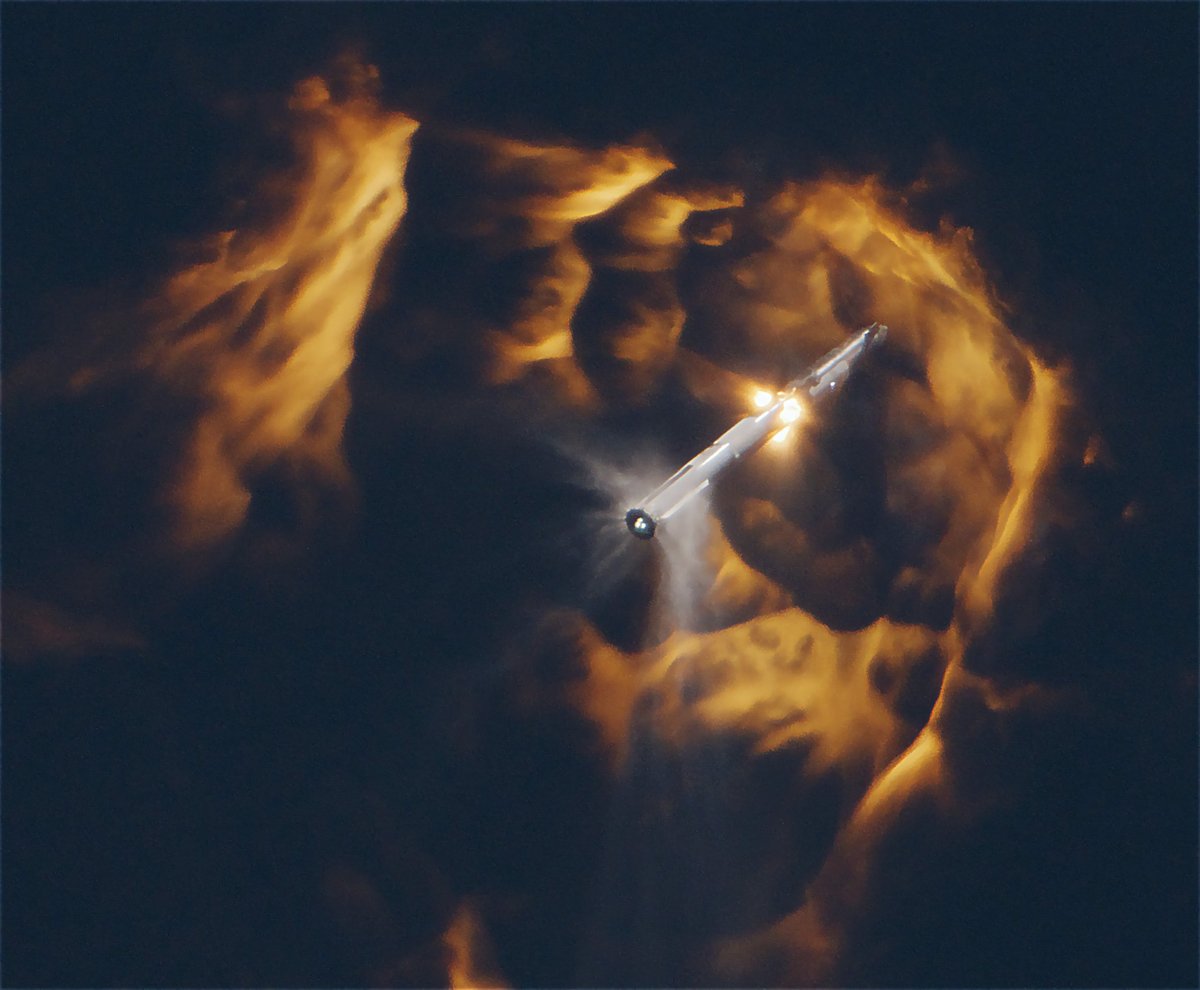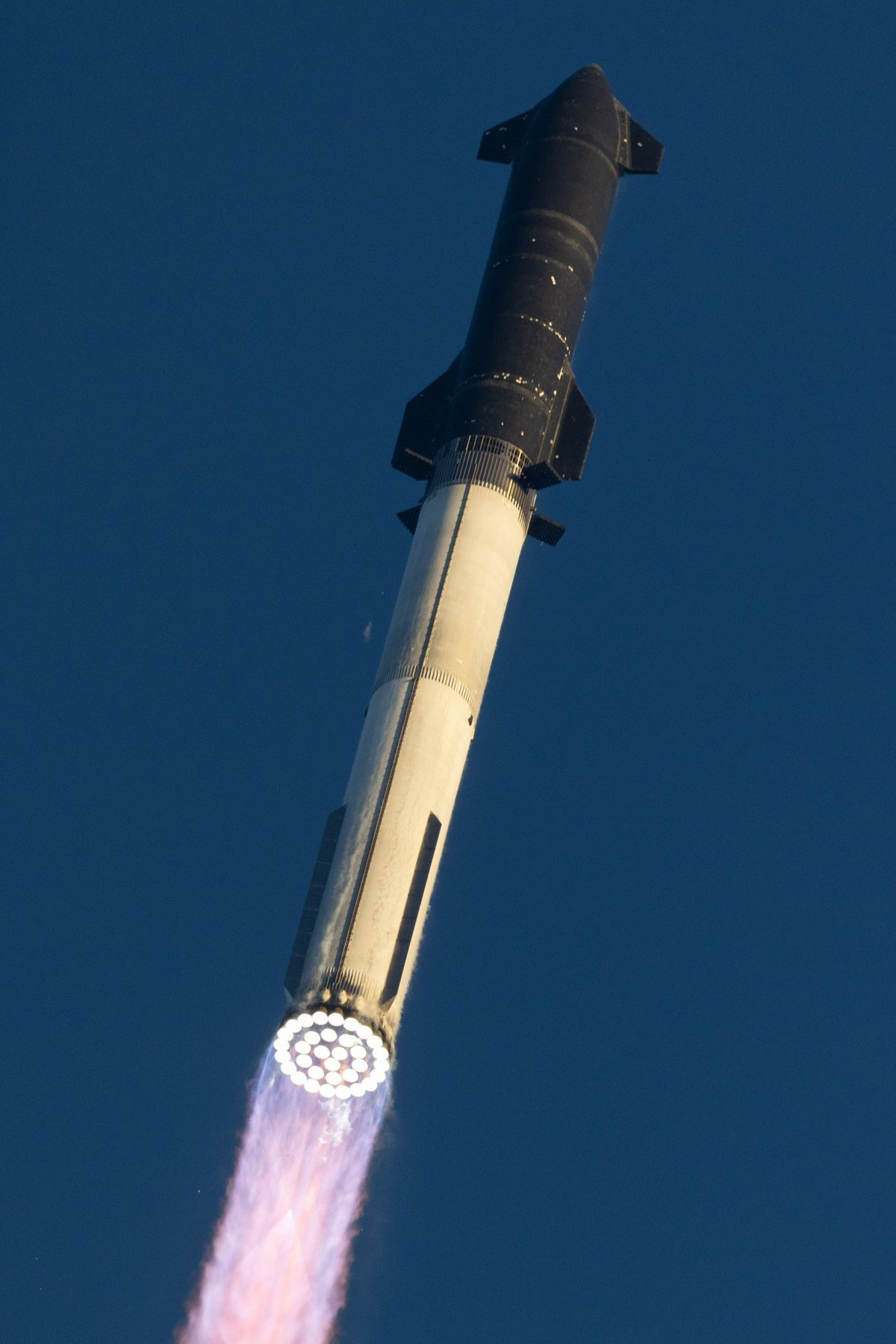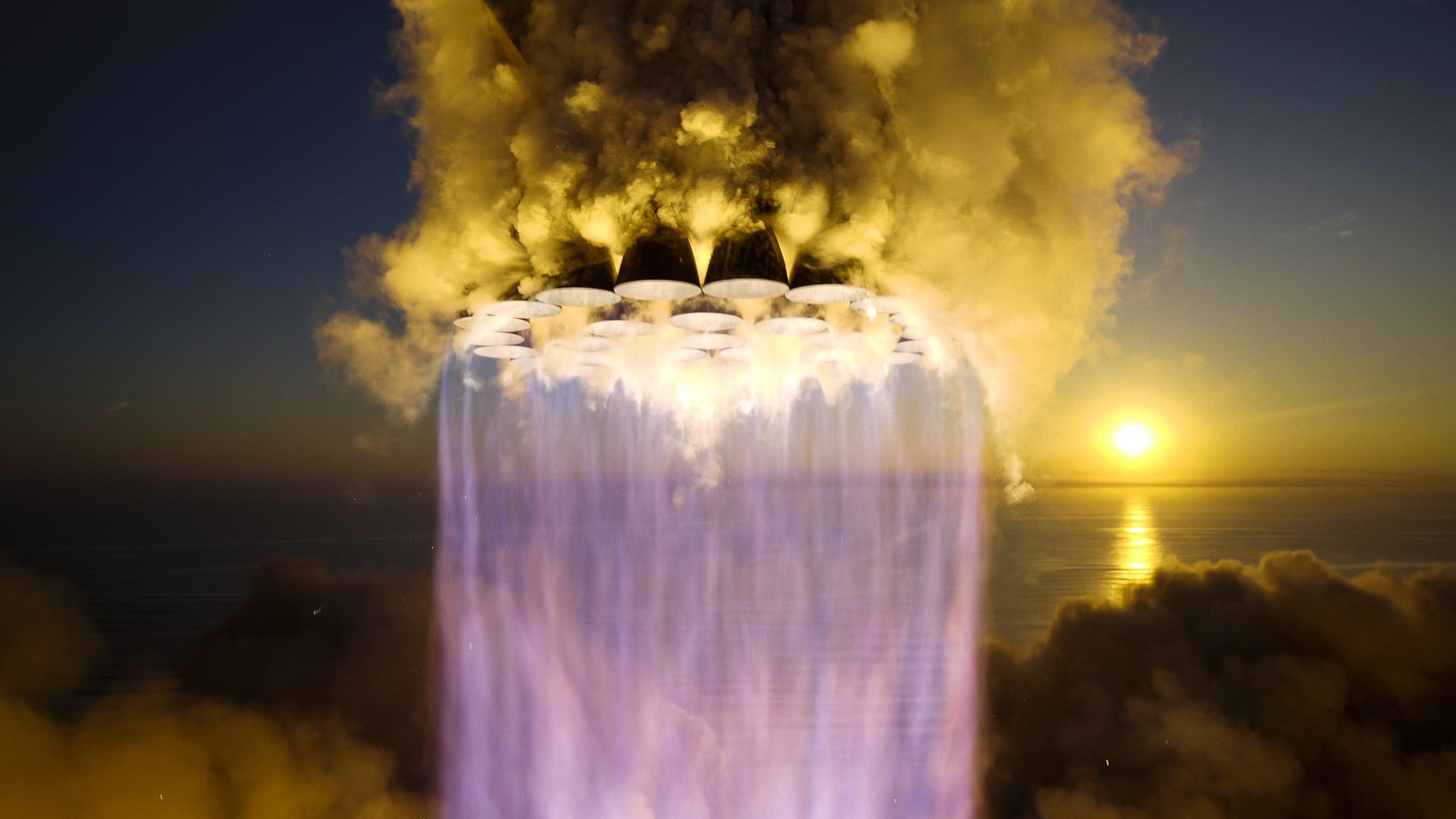7 months later the first flight of the juggernaut Super Heavy and his Starship, SpaceX attempted the same mission on November 18. The end result may look the same, it exploded, right? In truth, the teams have largely succeeded in their bet with a much more successful prototype. There are still a few fixes to achieve success.
At 2:03 p.m. this Saturday, November 18, the Super Heavy B9 booster successfully completed the ignition sequence for its 33 engines. Rising into the Texan sky in front of thousands of spectators gathered for the occasion on the coast, the Starship/Super Heavy duo completed a flawless first part of the mission, accelerating for 2 minutes and 45 seconds. Then the B9 booster’s engines gradually shut down as the Starship fired up its six “Raptors”, three of which are vacuum-adapted and provide most of the thrust, and three others in the center are more effective in atmospheric flight. Once the “hot” separation was complete, the Super Heavy booster attempted to restart its engines for a controlled return to ground, but it exploded. And the Starship also finished its race in a thousand pieces a few minutes later, at an altitude of 148 km and 24,000 km/h. Two days later, it is time to take a good look at what worked, what failed, and take stock.
Until takeoff, superb control of the ground segment
Easy to forget, especially when we see Super Heavy launching in front of a trail of flames more than 300 meters long, the impressive work carried out by the teams and the structures on the ground. Indeed, even if SpaceX has repeated the assembly and multiplied the fictitious countdowns since the end of August, the giant launcher took off just a few days after having received administrative authorization. Barely 24 hours of delay due to a control motor on one of the main booster’s stabilization grids… But the larger the rocket, the more potential problems there are during the countdown, filling the tanks or of the final sequence for the engines, especially since there are 33 to light! With only a 3-minute delay due to a pressurization delay, the Starbase teams took off the 120-meter-high unit weighing approximately 5,000 tons! And unlike the April test, all Raptor engines ignited.
Now this ignition was essential, not only to take off, but also to stay as short as possible above the firing table. During the first test, due to the failure of several engines, Super Heavy accelerated lazily, damaging the infrastructure for several seconds. In addition to a modified sequence, SpaceX also repeated its copy with the firing table, with a cooled metal plate system and a type of original flood. Without having to dig a flue (those trenches which, under traditional launchers, channel sounds and exhaust gases), the SpaceX teams seem to have solved the important problem of deterioration of the launch pad.
No “rain of concrete” this time for miles around, no blocks of hundreds of kilograms of chipboard thrown onto the road or the beach, no twisted and smoking metal… On X.com, Elon Musk confirmed on Sunday evening that the installations were in excellent condition, and did not require any major overhaul before the next test. Huge progress.
An uneventful (or almost) climb
From T-0 to T+2 minutes and 45 seconds, the task was assigned to the Super Heavy B9 booster to accelerate the Starship before it continued on its way alone. Here again, last April, several engines shut down during this climb, while flames inside the engine bay devastated even the flight electronics: the booster ended up entering an uncontrolled spin. None of that this November 18, with a rise and tilt towards the horizon punctuated by the usual comments of “ nominal trajectory » from ground control. Here again, this is impressive progress that SpaceX owes to its numerous tests of ground engines as well as its modifications to better shield and standardize the lowest section of its launcher. Not everything was 100% perfect though, and to find out we had to zoom in on the Starship S25. The latter, as it accelerated, lost dozens of tiles lining its underside and supposed to provide it with a thermal shield during its return to the atmosphere.
The stage most scrutinized by the ground teams and external observers was undoubtedly that of the separation between the Super Heavy booster and the Starship. It therefore took place “hot”, with the ignition of the six Starship engines before separating from the first stage and everything went very well on that side, it seems. The Super Heavy just turned around a little quickly. Was this planned or did it contribute to its disintegration seconds later? Indeed, SpaceX had set itself the objective for the booster, after the separation from Starship, to bring it back to the ground (in fact at sea, in the Gulf of Mexico) in a return and landing simulation. An important bonus for the rest of Starship’s career, which is planned as a set of reusable bricks.

Explosions to be expected
It was at this stage that the flight got tough. A problem arose when the Super Heavy booster tried to restart its engines: at least, this partially failed (SpaceX has not yet explained the source of the problem), and the onboard computer then triggered the self-destruct system . Satisfaction all the same, it is also an improvement, because during the first shot 7 months ago, this same system did not work.
Starship, for the first time, passed the Karman Line (100 km) and entered space before continuing its trajectory at an altitude of more than 150 km. It even came close to accelerating to the speed necessary to successfully complete its test flight and reach the Pacific Ocean, since it was speeding at 24,000 km/h when there was a final problem… just 15 seconds before the planned shutdown of the engines. Here again, the system is automatic and the on-board computer immediately initiated the destruction of the Starship. And again, it worked as expected, even if it was perhaps not 100% conclusive.
Indeed, Starship is a very durable vehicle, and it seems that observers equipped with telescopes have observed that the nose of the vessel has fallen relatively intact towards the ocean (information which is not currently corroborated by research or observations at sea). Here again, with this self-destruction, it is impossible to speak of a success of the mission, but the progress is unmistakable and impressive, and it has been in all phases of this new flight test.


Patience for what comes next?
Despite the optimism of Elon Musk, who writes on and the second flight), the reasons which suggest that SpaceX will accelerate its pace are numerous. First of all, the launch site is in good condition and the few necessary works have already started. Then, we know that SpaceX has not only prepared the elements of the second flight in recent months. All around the Starbase, Super Heavy boosters and Starships are stacking up. The next copies have already been produced, all that remains is to correct the errors and test again. The Super Heavy B10 and the Starship S28 already seem to be in the starting blocks…
Source : NASA Space Flight

15